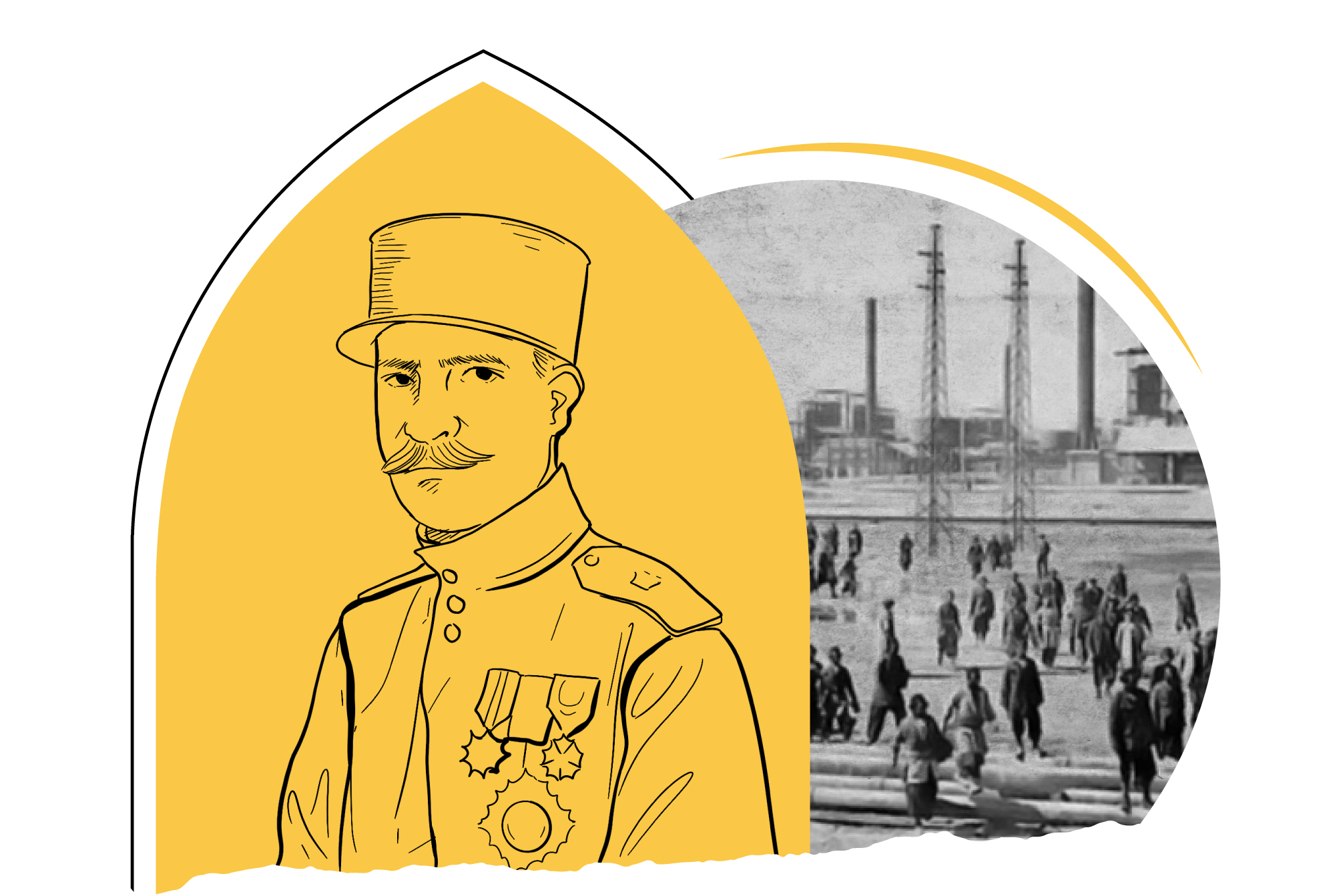
Through Racist Policy
Arabs were Prohibited from Owning Lands
or Real Estate, except, and exceptionally, with the Special Approval of Iranian Council of Ministers
Iran’s occupation of Ahvaz, the Emirate of Muhammarah in Arabistan, was for several ambitions, the most important of which was racism and economic exploitation. As for Persian racism towards the Arabs, after years of Arab sovereignty, was due to fire raging in the hearts of the Persians towards the Arabs. On the other hand, Tehran realized the economic importance of Ahvaz, whether in terms of abundance of fresh water through its rivers or the oil fields therein. It is known that most of Iran’s oil comes from Ahvaz. That is why Reza Shah Pahlavi occupied Ahvaz and annexed it to Iran in 1925, in a treacherous operation in which he colluded with England. Ahvazi Arabs were a victim of that collusion after their Emir, Sheikh Khazal Al-Kaabi, was arrested and exiled to Tehran until his death, which some researchers believe was an unnatural death at the hands of Iranian security agents.
In a legal memorandum, from the point of view of international law, researcher Amer al-Dailami describes Iran’s takeover of Ahvaz as “an occupation in accordance with United Nations resolutions and international decolonization contracts”. From this point, he believes that Iran has violated international conventions that regulate the situation of occupation, where it turned into Persian persecution that amounted to the level of committing brutal massacres by killing and arresting innocent Ahvazi people. This led to great human losses, in addition to a lot of material damage. This Persian oppression was manifested in numerous military and paramilitary actions, overt or covert.
From an early age, Tehran implemented a systematic policy of demographic change in Ahvaz as, since 1928, it has brought thousands of families of Persian farmers to the areas of Ahvaz, which are characterized by the fertility of its lands, so as to begin the process of displacement and replacement of population. Further, Iranian authorities encourage the Persian elements to procreate, within the scheme of “demographic fertilization” in Ahvaz, at the expense of the local Arab element.
On the other hand, increase in the discovery of oil in Ahvaz and the transformation of the port and refinery of Abadan into the most important oil centers in Iran, attracted large numbers of Persian immigrants from various Iranian cities. Undoubtedly, the Iranian administration helped in that, which some describe as the “Persian policy of discrimination against Arab people in Ahvaz in terms of employment and culture”.
Perhaps the most important crime of Tehran in the matter of forced displacement and demographic discrimination is its encouragement of Persian feudal lords to plunder the lands of simple Arab farmers in Ahvaz and Arab landowners working in other professions, such as service employees and taxi drivers. These actions, which are contrary to all humanitarian conventions, were justified by compensating those simple Arabs with other lands in northern Iran, which did not happen. The fact is that Tehran was seeking to push these Arabs to leave their homeland in Ahvaz in favor of the Persian feudal lords, in what is deemed a forced displacement.
In (1962) Tehran issued the Agrarian Reform Law, as many Persian peasants from outside Ahvaz were granted large lands in that region, while every Arab was forbidden to own land or real estate except with the special approval of the Iranian Council of Ministers.
The policy of forced displacement and demographic discrimination was not limited to the Shah’s era only. The same policy continued during the era of the Khomeinist Republic, when several thousand Arabs were displaced from their homeland, especially the fertile areas on both sides of Karun River. Tehran also established many agricultural settlements and brought Persian settlers thereto in order to further demographic change in Ahvaz. Accordingly, Amnesty International declared in its report that “Iranian authorities confiscate vast areas of land with the aim of depriving Arabs of their lands, under a strategy that aimed at forcibly transferring Arabs from their lands to other regions, while facilitating the movement of non-Arabs to Arabistan”.
This was strongly reflected in the political situation in Al-Ahvaz. In 2005, Ahvaz witnessed a major uprising that spread throughout the region, rejecting the policies of forced displacement, the expulsion of many Arab elements and the replacement of other elements.
The impact of the policy of forced displacement and demographic discrimination on Arab representation in the Iranian Parliament is also mentioned, as it has dropped from thirteen (13) in the early twenty-first century to just two (2) representatives. Thus, Tehran practiced a policy of forced displacement and settler colonialism against the Ahvazi Arabs, ignoring all international covenants and agreements.
The number of Arab representatives in the Iranian Parliament has been reduced from 13 to two.



- Farah Saber, Reza Shah Pahlavi… Political Developments in Iran 1918-1939 (Sulaymaniyah: Kurdistan Center for Strategic Studies, 2013).
- Amer Al-Dailami, Iranian Occupation of the Arab Region of Al-Ahvaz, United Nations Resolutions and International Contracts to Decolonization (Amman: Academic House Company, 2021).
- Athbi Al-Otaibi, Iranian occupation of the Emirate of Arabistan and its People’s Right to Self-Determination, Master’s Thesis in Political Science (Amman: Middle East University, 2013).
- Ali Mohafaza, Arabs and the Contemporary World (Cairo: Dar Al-Shorouk, 2009).

